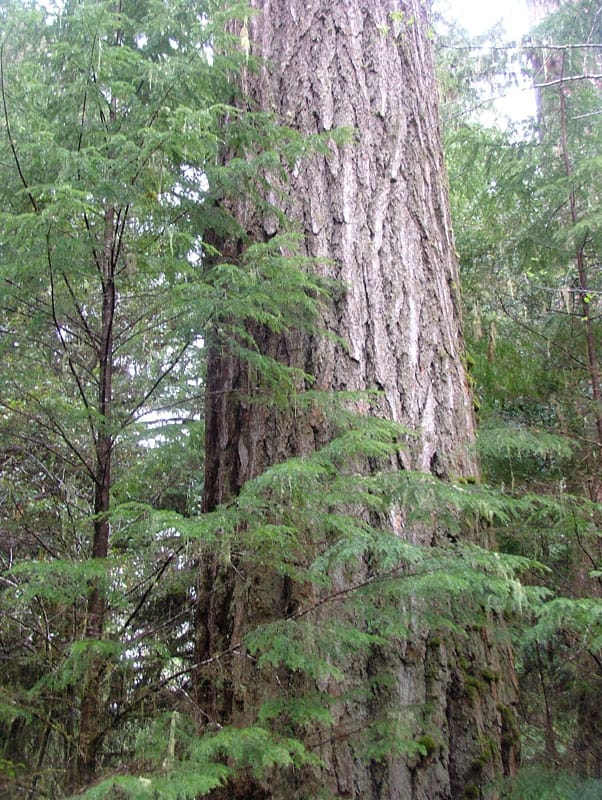Without making any value judgements here, I find this collection of meeting summaries to be fascinating. Chad Hanson is a full member of the Dinkey Collaborative Group, working to create a better future for the Sierra National Forest. It will be very interesting to see how this process will evolve, with Hanson’s input solidly in view. The level of transparency seems acceptable to me. At the same time, The Sierra is using the new Planning Rule to update their Forest Plan.
Mr. Hanson noted that there was no option for opposing the proposal, and also stated his concern for his opposition going undocumented. Mr. Hanson expressed two main concerns with the proposal. He stated that the proposal assumed high intensity fire results in fisher habitat loss, and commented that the proposal states an inaccurate assumption that trees experience almost complete mortality when a fire burns. Mr. Hanson expressed that the mortality rate was not supported by current data. Mr. Dorian Fougères assured Mr. Hanson that his position would be documented.
Click to access stelprdb5364086.pdf
There are other meeting notes available by searching for “Dinkey Collaborative Hanson”.

Yes, no “value judgement” Larry, but I’m not sure I’ve ever seen you use the word “preservationist” in a positive light. Besides, wouldn’t the title of your post be more correct if it read “When a PhD Fire Ecologist Joins a Collaborative Group?”
See, because even though those notes are tough to slog through, here are the types of comments a PhD Fire Ecologist provides (from the notes):
Chad Hanson, John Muir Project
a.
Explanation: CBI asked the Dinkey Collaborative Group to comment on its proposal (dated 1/12/12). I oppose the CBI proposal for two main reasons. First, on page one the proposal describes wildland fire only in negative terms – i.e., in terms of risk or adverse impacts – with regard to Pacific fishers. There is no scientific basis for this assumption, as it has not been empirically tested, at least not at a sufficiently large spatial scale or without the confounding effects of post fire logging.
Second, on page two the proposal says the goal is to create a decision support framework based upon certain studies, including Thompson et al. (2011). However, Thompson et al. (2011) assumes a 90% mortality level for wildland fire as part of a “what if” modeling exercise. It does not reflect actual wildland fire mortality levels, which average only about 20% over the past 10 – 20 years. If the 90% fire mortality assumption is used to evaluate balance of risks between thinning/logging and fire, it would inaccurately stack the desk in favor of logging, such that only a complete clearcut would be reported as a greater risk than fire under such an erroneous assumption.
Sincerely, Chad Hanson, Ph.D.
Thanks, Matthew, for finding those paragraphs. But I am not so sure that a fire ecologist knows more than wildlife biologists/ecologists about what happens to fishers in fires.
See our previous discussion. Fishers’n’Fire
Larry, can you link to the proposal?
Sharon, Seems to me that what Dr. Hanson is concerned about, in the specific paragraph above, is that some fire modeling exercises assume a 90% mortality level, even though the average fire mortality levels for the past 10 to 20 years was 20%.
Oh, and speaking of modeling and mortality levels, isn’t that what that one fisher study was using? Perhaps they too used a made up mortality level for “high-intensity fire” that exists more inside a computer than out in the forest.
I think they are lagging behind, still hashing out more general policy positions. It is also “interesting” that Hanson lives hundreds of miles away. I thought I had read somewhere that some members can participate remotely. I think this might be an important litmus test for collaboration. We probably couldn’t pick a better combination of factors to see how contentious collaboration proceeds.
There are two mills which are fairly distant from the Sierra NF. The Sierra Forest Products mill, a family-owned business, is barely hanging on to solvency, suffering with a boom and bust cycle, with salvage volume coming all at once, sometimes. There are a variety of reasons why the Sierra NF lags behind the rest of the Region in meeting timber goals. I’ll bet they harvest very little of their annual growth. There is a local eco-group which doesn’t appear to be represented.
Unless Hanson is a representative for other groups, I wonder about the decision to accept Hanson as a member, knowing his litigious reputation. Yes, his wife is an eco-lawyer. Yes, Hanson wants to end the Forest Service timber sale program in California. Yes, he has won lawsuits that stopped roadside hazard tree projects.
Even after all that, I have to give Hanson a clean slate for participating in a collaborative situation. What I have read indicates a reasonable concern, from his point of view.
Ironically, they mentioned our Amador-Calaveras Collaborative as being united and moving forward.